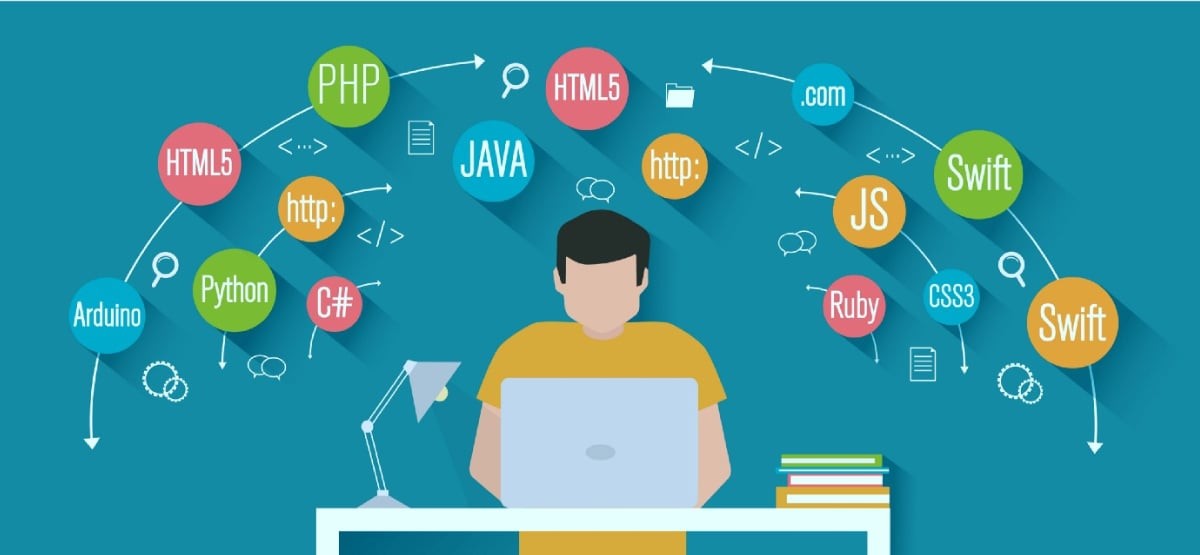Introduction
In the ever-evolving landscape of technology, programming languages play a pivotal role in shaping the way we interact with computers and software systems. These powerful tools serve as the building blocks for developers to create innovative applications, websites, and software solutions that drive our modern world. From low-level languages that interact closely with hardware to high-level languages that focus on simplicity and abstraction, the diversity and versatility of programming languages have sparked countless debates and discussions among developers and tech enthusiasts alike. In this article, we will explore the significance of programming languages in the technology realm and delve into some of the most popular ones that have shaped the digital age.
The Role of Programming Languages
Programming languages are essential for translating human instructions into a format that computers can understand and execute. They act as an intermediary between developers and machines, allowing programmers to express complex algorithms and logic in a structured and readable manner. Without these languages, software development would be a daunting task, as direct communication with hardware is complex and error-prone.
As technology advances, so do programming languages, evolving to meet the demands of modern computing. Today’s languages are designed to be efficient, secure, and capable of handling intricate tasks across various platforms and devices. From mobile apps and web development to artificial intelligence and data analysis, programming languages are the bedrock upon which our digital world is built.
Popular Programming Languages
- Python: Known for its simplicity and readability, Python has become one of the most popular programming languages in recent years. It is widely used in web development, data analysis, artificial intelligence, and automation. Its large community and extensive library support make it a preferred choice for both beginners and experienced developers.
- JavaScript: As the language of the web, JavaScript enables interactive and dynamic web experiences. It allows developers to create client-side interactions, manage web content, and build powerful web applications. With the advent of Node.js, JavaScript has also expanded its reach to server-side development.
- Java: Renowned for its “write once, run anywhere” philosophy, Java is a versatile language used extensively in enterprise-level applications, Android app development, and server-side systems. Its robustness and platform independence have made it a go-to language for critical applications.
- C/C++: These languages are the foundation for system programming, embedded systems, and performance-critical applications. C/C++ allows developers to have low-level control over hardware, making it suitable for developing operating systems, device drivers, and gaming applications.
- Ruby: Ruby gained popularity due to the elegant and concise code it produces. It is the language behind the web application framework Ruby on Rails, which has revolutionized web development by emphasizing convention over configuration.
- Go (Golang): Developed by Google, Go has gained traction for its simplicity, speed, and efficiency. It is well-suited for concurrent tasks, making it ideal for cloud-based applications and distributed systems.
The Influence of Paradigms
Programming languages are often categorized based on their paradigms, which define the style and approach to solving problems. The three primary paradigms are:
- Imperative: In this paradigm, developers write code that explicitly describes a sequence of steps to achieve a particular result. Languages like C and Python follow the imperative paradigm.
- Functional: Functional languages treat computation as the evaluation of mathematical functions, relying heavily on immutable data and avoiding side effects. Haskell and Lisp are prominent examples of functional languages.
- Object-Oriented: Object-oriented languages model data as objects with attributes and behavior, promoting reusability and modularity. Java and C++ are widely used object-oriented languages.
The Future of Programming Languages
As technology continues to evolve, so will programming languages. Developers will seek languages that enable them to create efficient and secure applications with ease. We can expect languages that facilitate more intuitive machine learning and artificial intelligence development, foster seamless integration with emerging technologies like virtual reality and augmented reality, and improve security to tackle the growing threats in cyberspace.
Furthermore, there will likely be an emphasis on languages that focus on energy efficiency and sustainability, given the increasing concern for environmental impact. Languages that enable developers to optimize resource usage and reduce energy consumption will undoubtedly be at the forefront of software development in the coming years.
Conclusion
Programming languages are the backbone of technology, enabling us to transform ideas into reality in the digital realm. From the earliest days of computing to the modern age of artificial intelligence and the Internet of Things, these languages have been instrumental in shaping our world. Whether you are a seasoned developer or someone just beginning to explore the vast landscape of programming, understanding the power and potential of these languages is essential in becoming a part of the technological revolution that continues to unfold before us.


